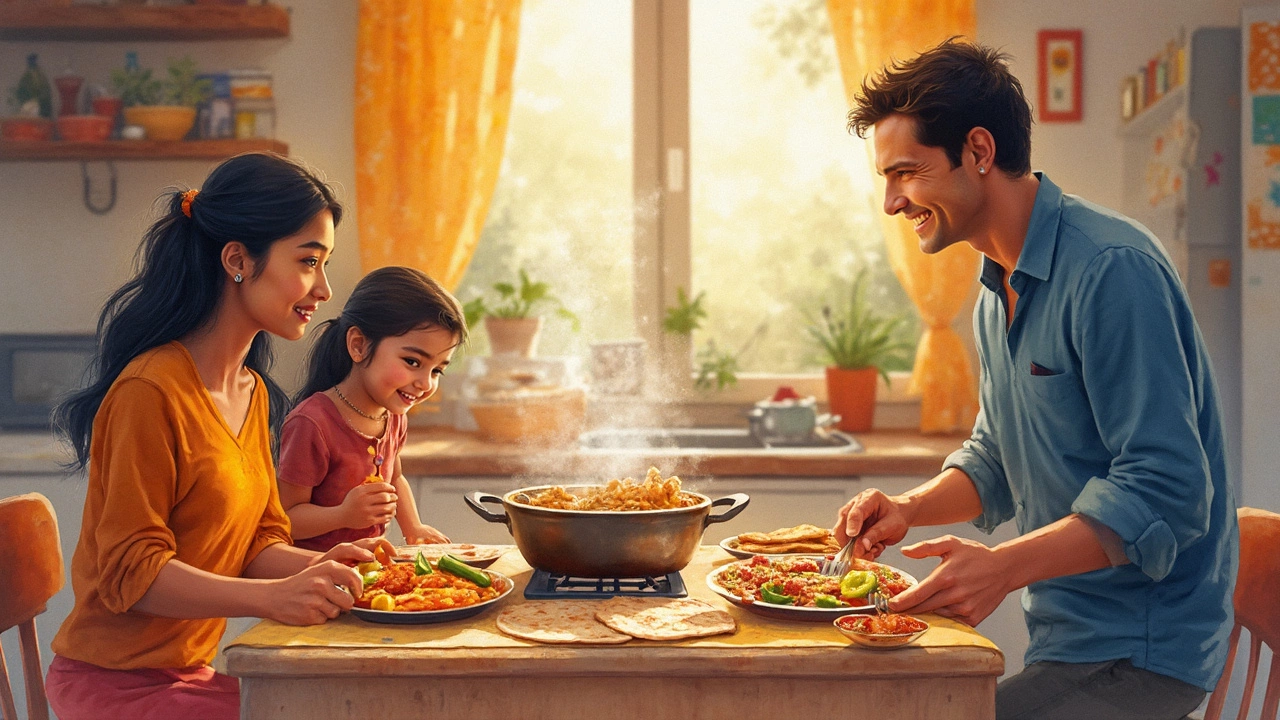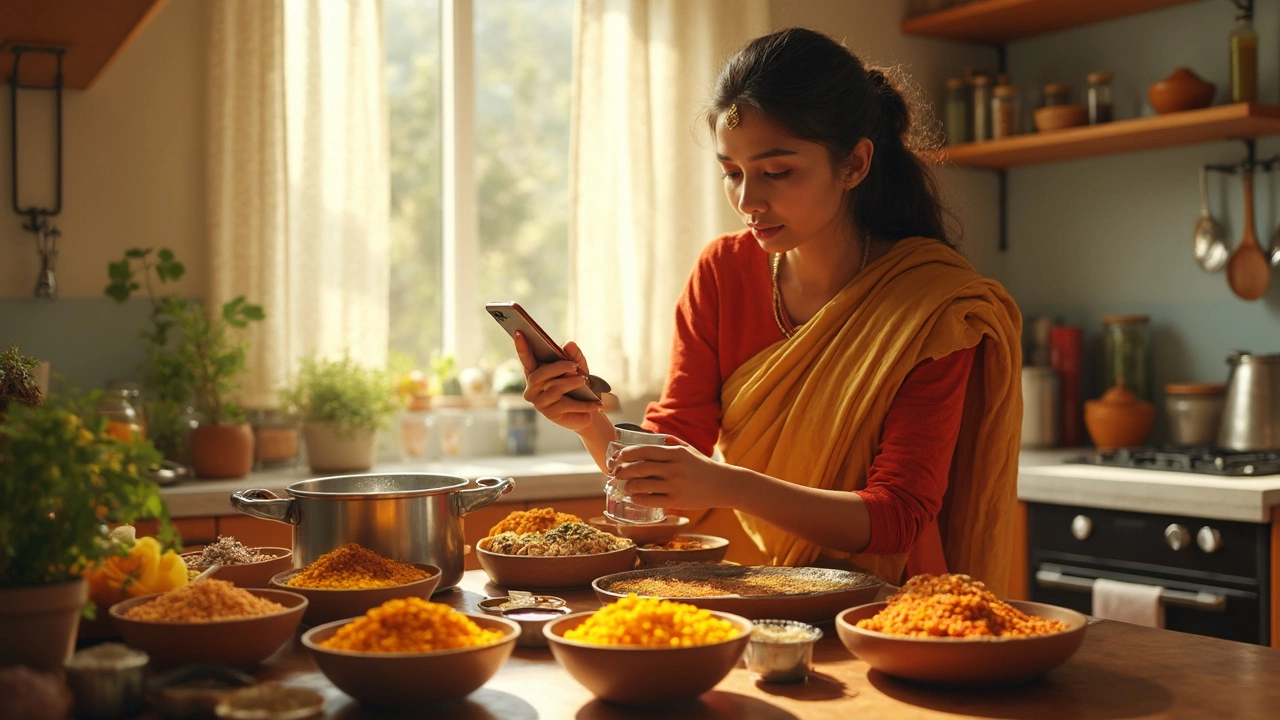Standing in the kitchen after a long day and realizing you forgot to soak dal is the worst. But here’s a bit of hope: not every dal needs soaking. Moong dal (that tiny yellow split lentil) is the kitchen’s secret weapon. Pour it straight from the packet into the pot, add water, and it’ll cook in no time. Seriously, it’s a lifesaver for last-minute dinner plans or those lazy weekends when meal prep is the last thing on your mind.
Most Indian households grew up hearing you have to soak dal for the best taste and easier digestion. Turns out, moong dal challenges that rule. If you pop it in a pressure cooker, it softens up super-fast—in about 10 to 12 minutes. No advance planning needed. Plus, it’s gentle on the stomach, so even my husband, Rohan, who usually complains about heavy food, loves it when I make moong dal for a quick meal.
- The Quickest Dal: No Soaking Needed
- Why Do We Usually Soak Dal?
- Speed Hacks: Cooking Dal Even Faster
- Taste and Texture: Does Soaking Matter?
- Top Dishes with No-Soak Dal
The Quickest Dal: No Soaking Needed
Out of all the dals you’ll find in the kitchen, moong dal (yellow split lentils) is hands down the fastest to cook—no soaking required. While recipes often nag about soaking lentils for hours, moong dal breaks all the rules. It’s ready for the pot, even if you’re way behind on prep.
Here’s the cool part: you can just measure out your moong dal, give it a wash, and toss it into the pressure cooker or even a regular pot. In a standard Indian pressure cooker, it takes barely 10-12 minutes. If you’re using a simple stovetop pan, keep an eye for around 20-25 minutes. With no pre-soak needed, you literally shave off hours from your cooking routine.
People sometimes wonder how moong dal stacks up against other dals in terms of cooking time and prep. Here’s a no-nonsense comparison:
| Dal Type | Soaking Needed? | Pressure Cooking Time |
|---|---|---|
| Moong dal (yellow split) | No | 10-12 min |
| Masoor dal (red lentils) | Optional | 12-15 min |
| Toor dal | Yes (30-60 min) | 15-20 min |
| Chana dal | Yes (1-2 hours) | 20-25 min |
| Urad dal | Yes (2-4 hours) | 20-30 min |
So, if you’re ever short on time or suddenly decide to whip up a no-soak dal recipe, moong dal has your back. This is also the dal you’ll often find in quick khichdis, simple soups, or a plain tadka dal that comes together faster than you can set the table. Another plus—moong dal is super light and easier to digest, which makes it a good pick even for kids or anyone recovering from an upset stomach.
One small but important tip: rinse the dal thoroughly before cooking. This isn’t just for hygiene—it helps remove some of the starch and stops the dal from foaming up too much while cooking. And if you’re really in a rush, electric pressure cookers like the Instant Pot cook moong dal in even less time. It’s truly the everyday hero of busy Indian kitchens.
Why Do We Usually Soak Dal?
Soaking dal isn’t just an old family habit. There’s actual logic behind it. When you soak lentils, they cook faster and more evenly, which saves both gas and electricity. If you’re using thicker dals like chana dal or rajma, skipping the soak means waiting ages for them to soften, if they ever do completely.
But there’s more to it. Soaking helps break down some of the complex sugars, which means less bloating and gas after your meal. A 2018 study published in the International Journal of Food Science showed that soaking lentils for 6-8 hours can lower their cooking time by up to 40%. Plus, it actually makes certain minerals like iron and zinc easier for your body to absorb. That’s a win if you’re thinking about nutrition, not just speed.
- Cuts cooking time for hard dals like chana and urad by almost half.
- Helps make dal easier on the stomach (especially important if your family complains about after-effects!).
- Boosts nutrient absorption.
Let’s look at a quick table with details on common dals and their soaking needs:
| Type of Dal | Is Soaking Needed? | Typical Soak Time | Pressure Cook Time (Soaked) |
|---|---|---|---|
| Moong Dal | No | — | 10-12 mins |
| Masoor Dal (Red Lentil) | Optional | 30 mins | 10-12 mins |
| Chana Dal | Yes | 4-6 hours | 25-30 mins |
| Toor Dal | Optional | 30-60 mins | 12-15 mins |
| Urad Dal | Yes | 4-6 hours | 25-30 mins |
If you’re after that no-soak dal for hectic days, moong dal is your best bet. But if you’re planning rajma or chana dal for dinner, a little bit of prep in the morning goes a long way. Your stomach—and the electricity bill—will thank you.

Speed Hacks: Cooking Dal Even Faster
No time to soak and want dinner on the table ASAP? You can still make no-soak dal recipes happen without breaking a sweat. Moong dal is already a rapid-cooker, but there are solid ways to cut that cooking time even more and make sure your meal is ready before your favorite show starts.
- Pressure Cooker or Instant Pot: Use a pressure cooker or Instant Pot—nothing beats them for speed. Moong dal takes just 10 minutes under pressure, but if you’re really in a rush, add an extra half cup of water and crank it up for 6–8 minutes. Natural pressure release makes it even softer, but quick release is fine if you’re in a hurry.
- Hot Water Shortcut: Pour boiling water over your dal instead of cold. This simple switch shaves off 3–5 minutes from total cooking time because the dal starts softening right away as it heats.
- Smaller Batches: If you’re only cooking for one or two, use a small pan. Less water plus less dal equals less time needed for everything to get tender.
- Stirring Is Magic: Give your dal a quick stir every few minutes. This spreads the heat evenly and helps break it down faster, especially over a stovetop.
If you’re curious about how cooking times stack up, here’s a quick look:
| Dal Type | Soaked (Pressure Cooker) | Unsoaked (Pressure Cooker) |
|---|---|---|
| Moong Dal | 6 min | 10 min |
| Masoor Dal | 6 min | 10 min |
| Toor Dal | 8 min | 14 min |
| Chana Dal | 12 min | 20 min |
One last tip—don’t use too much water in a hurry. More water means longer time to pressurize and simmer down. Aim just above the dal level. Trust your cooker, and you’ll get reliable results every single time.
Taste and Texture: Does Soaking Matter?
If you're cooking dal regularly, you’ve probably heard debates on soaking. For some dals, like chana dal and toor dal, soaking makes a big difference—they get softer and cook up nicely. But when it comes to moong dal, soaking isn’t a game changer. You’ll still get that soft, mushy texture, especially if you use a pressure cooker. In fact, skipping the soak doesn’t really mess with the taste or the mouthfeel in everyday dal recipes.
Here's why: moong dal is naturally thin-skinned and soft, so it breaks down quickly in hot water. When you soak it, you might shave off a couple of minutes from cooking time, but not much else changes. On the other hand, dals with a thicker husk (like urad dal or kidney beans) absolutely need soaking, or you’ll end up with chewy, undercooked pieces, no matter how long you boil them.
Check out this real-world comparison I’ve done at home. It's super simple, but it clears up the confusion:
| Dal Type | Soaking Required? | Average Cooking Time (Pressure Cooker) | Texture After Cooking |
|---|---|---|---|
| Moong Dal (split) | No | 10-12 min | Smooth, soft |
| Toor Dal | Yes | 15-20 min (soaked) | Creamy |
| Chana Dal | Yes | 20-25 min (soaked) | Slightly chunky |
| Masoor Dal (red) | No | 10-12 min | Soft, mushy |
So, if you ever run late or just want to cook something in a hurry, reaching for moong dal or masoor dal is a great trick. Most people honestly can’t taste the difference if it’s soaked or not, especially when you spice it up with the usual tempering. Save the soak for thicker dals, and don’t stress when you’re short on time.

Top Dishes with No-Soak Dal
Not soaking dal doesn’t mean you’re stuck making boring recipes. Moong dal works in so many dishes—quick, easy, and full of flavor. Here’s where you can let your creativity loose, or just get a meal on the table faster.
- No-soak dal tadka: The classic. Fry cumin seeds, garlic, and onions in a bit of oil, add tomatoes and spices, then toss in washed moong dal and water. Cook until soft. It’s what I make when Rohan comes home hungry and tired.
- Moong dal cheela: Like savory pancakes, you just mix plain moong dal with ginger, chilies, and maybe a bit of chopped spinach or onions. Put spoonfuls on a hot pan, flip, and you’re done. Super protein-packed breakfast, and kids love it too.
- Simple khichdi: This one-pot meal is comfort food at its finest. Combine moong dal with rice, add turmeric, salt, ginger, and cook until mushy. Perfect for sick days or when you want something easy but filling.
- Moong dal soup: Blend cooked moong dal with garlic and curry leaves for a warming, light soup. It digests easily and works for those days when you want something simple but don’t want to skip out on nutrition.
- Quick moong dal salad: Boil the moong dal just until tender, drain, and toss with chopped cucumber, tomatoes, a squeeze of lemon, and a little chaat masala. High in protein, low on effort, great for lunchboxes.
What’s great is these dishes don’t need hours in the kitchen, no soaking bowls to remember the night before, and you still get the benefits of home-cooked food. Next time you see moong dal in your pantry, remember how versatile and forgiving it is—even when you forget to plan ahead.
